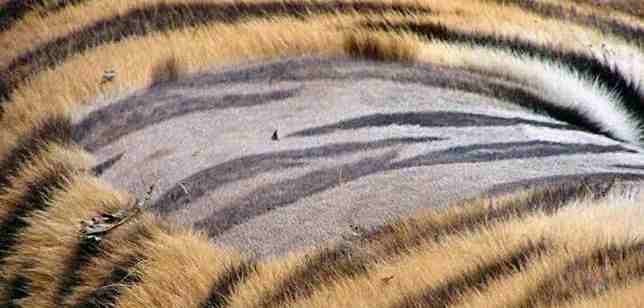 Alfred Ajibola
- Sat, 28th December, 2019 @ 7:18: AM
Alfred Ajibola
- Sat, 28th December, 2019 @ 7:18: AM
Topics in Basic Science
What is science? Qualities of a scientist Resources from living things Resources from animals Importance of immunization Types of Carbohydrates: Monosaccharides and Polysaccharides Carbohydrates: Disaccharides and Oligosaccharides Len Academy Examination Questions for Basic Science, JSS2, 2nd Term Len Academy Examination Questions for Basic Science, JSS3, 3rd Term Len Academy Examination Questions for Basic Science, JSS3, 2nd Term Primates: Characteristics of Primates Effects of improper waste management Waste Management: Causes of waste in the society Concept of mass and weight Mineral Salts: Sources, functions and deficiencies of macronutrients Sources, functions and deficiencies of micronutrients Len Academy questions for Basic Science JSS1 Len Academy mid-term test questions for Basic Science JSS1, 2nd Term Microorganisms causing food, water and air borne diseases Vector borne organisms and the diseases they cause Bones of the Human SkeletonAcademic Questions in Basic Science
Which of the following diseases is associated with river blindness?
A. Anthrax
B. Lawnmower Disease
C. Onchocerciasis
D. Devil's Crunch
E. Trypanosomiasis
F. Tularemia
The vector for yellow fever is _____.
A. Aedes Mosquito
B. Female Anopheles Mosquito
C. Plasmodium
D. Flavivirus
E. Black Fly
F. Bacillus Anthracis
The bones of the head and face make up the skull. These bones are _____ in number.
A. 12
B. 14
C. 16
D. 18
E. 20
F. 22
Bacteria are not a constituent of our environment.
A. True
B. False
Below are types of drugs. Which of these is considered as pain killers?
A. Stimulants
B. Depressants
C. Opiods and Morphine Derivatives
D. Hallucinogens
E. Anabolic Steroids
F. Cannabinoids
Which of the following statement is false concerning drugs?
A. Drugs can be inhaled
B. Drugs can be injected directly into the bloodstream
C. Drugs can be eaten
D. Drugs exist exclusively in the forms of tablets and syrups
E. Drugs can be placed under the tongue
F. Drugs can be taken with water or another liquid
Vaccination involves a process of introducing pathogens or germs into a person in order to prevent such person from the diseases they cause.
A. True
B. False
With regards to the human health, foreign bodies are best regarded as _____.
A. International bodies
B. Antilators
C. Antibodies
D. Antigens
E. Antibiotics
F. Antidotes
Waste management can be defined as the process of collecting, processing, recycling and controlling any material considered as waste.
Wastes are generated from homes, factories, market places, hospitals, schools, industries and many other places. The growth and development of nations where these wastes are prevalent will be adversely affected.
Please read on the causes of wastes in a society here.
Below are some of the effects of improper waste management:
The burning of waste materials like plastics, papers and rubber will contaminate the atmosphere with gases like carbon(II)oxide, carbon(IV)oxide and sulphur(IV)oxide.
Atmospheric pollution via the release of toxic gases will also result from biodegradable waste. This is true because biodegradable wastes are eventually broken down or decomposed by bacteria and fungi respectively.
Please read on the types of wastes here.
Also, waste may contain toxic chemicals like dioxin. Dioxin is a waste product generated from the rearing of broilers.
Understand that the pollution of the atmosphere as a result of these wastes will negatively affect humans, plants, wildlife and other living organisms.
Please read more on air pollution, it's effects and solutions here.
The pollution of water bodies by solid and liquid waste will result in the suffocation and death of aquatic organisms.
As an instance, oil spillage has been a major problem in the riverine areas (south-south region) of Nigeria. Oil spillage is prevalent here since crude oil (or petroleum) is one of the natural resources present in the south-south states of Nigeria.
You can read on the fractional distillation of petroleum here.
The decomposition of biodegradable waste will result into the release of green house gases like carbon dioxide, methane and nitrous oxide into the atmosphere.
In addition, human activities like combustion and burning are constantly releasing more greenhouse gases, especially carbon(IV)oxide into the atmosphere.
Please read more on greenhouse gases (through the functions of the atmosphere) here.
Excessive greenhouse gases have an adverse effect on weather conditions over a long period of time. This is so because these gases are gradually bringing about an increase in the temperature of the earth, giving rise to global warming.
Waste materials such as plastic containers, ink, oil and petroleum products will have damaging effects on the soil.
The aformentioned wastes will adversely affect the growth of plants and other organisms living in and on the soil. As a result, the soil becomes less fertile and agricutural land and its activities becomes negativity affected.
Please read on agricultural land and its uses here.
With regards to the carbon cycle, plants are the only organisms that take away carbon(IV)oxide from the atmosphere. They do this through a process termed photosynthesis.
Interestingly, plants are also the only organisms that fixes oxygen back into the atmosphere. They do this through photosynthesis.
Please read more on autotrophic nutrition (photosynthesis) here.
Note: Without atmospheric oxygen (generated by plants), humans and animals will cease to exist.
Please read on the characteristics of living organisms here.
Carcinogens are defined as substances that can cause cancer. Examples are radioactive wastes.
Radioactive wastes can be potentially damaging to humans when inhaled. They increase the formation of cancerous cells in human systems. Some may even cause leukemia, a form of blood cancer.
You can read on the classification bones (to understand how blood cells are produced).
When excess waste materials find their way into gutters and pipes, blockage of such gutters and pipes will result. Blocked gutters and drainages bring about flooding in the affected areas.
Please read on soil erosion here.
Also, stagnant waters will act as breeding sites for mosquitoes and other vectors of diseases.
Please read on vectors of diseases here.
Wastes materials found in neighborhoods serve as homes to pest and pathogens. These pathogens will in turn cause diseases in the long run.
Please read on micro organisms causing food, air and water borne diseases here.
As an instance, lasa fever is a disease caused by pathogens carried by rodents dwelling in dirty environments.
Other diseases caused as a result of improper waste management include cholera, malaria, fever, dysentery, diarrhea and tetanus.
Kindly share this article via the links below:

Please click here to contact Alfred if you require any of the following services:
If you need a standard website at an affordable price.
Online training on the academic subjects: biology, chemistry and basic science.
If you require an advanced smart school management system (web application) for your school.
Click here to read on Len Academy Smart School Software.
Please click here to follow Len Academy on Google News.
Amazing facts in Basic Science
According to scientific research, if the first tear drop comes from the right eye, it’s tears of joy. If it comes from the left eye, then it is as a result of pain
Dentistry is the oldest profession in the world. This is considered true because a research conducted by the University of Bologna, Italy on a 14,000-year-old skull found that one rotten tooth in the jaw had been deliberately scoured and scraped with a dental tool
Scientific research has it that the human nose can distinguish more than a trillion different odors

Tigers have striped fur. So also is their skin

The most common wild bird in the world is native to Africa, and it's the red-billed quelea with a population estimated to be around 1.5 billion
Of all animals, mosquitoes hold the record of killing most humans annually. They are responsible for the deaths of 725,000 - 1,000,000 persons yearly
Antibiotics fights and kills bacteria. However, they do nothing to a virus
All insects have six legs. However, dragonfly has six legs but can't walk
The chin is defined as the protruding part of the face below the mouth, formed by the apex of the lower lip. It is shown below:

Interestingly, humans are the only animals with chin

Ripe cranberries will bounce like a ball. For this reason, they are nicknamed 'bounceberries'. They will also float in water
Notable points in Basic Science
We have six classes of food. These are:
Carbohydrates
Proteins
Fats and Oils
Vitamins
Mineral Salts
Water
In humans, roughages are not classified as one of the classes of food. This is so because they aren't digested. Instead, roughages facilitate the movement of bowels in the large intestine (colon); and for this reason, they can become useful in treating constipation.
Food refers to anything that is ingested by living organisms, giving them nutrients and thus enabling them to stay alive.
As an instance, 99% of a panda's diet is bamboo. In this case, bamboo is considered as food to a panda since it provides a source of nutrient and keeps it alive. This is shown in the image below:

The only process in nature that actively enriches our atmosphere with oxygen is photosynthesis. Every other process like respiration, burning and combustion takes away oxygen from it. In addition, they introduce carbon(IV)oxide (CO2) into the atmosphere.
Photosynthesis is also the only process that takes away carbon(IV)oxide (CO2) from the atmosphere.
Photosynthesis is defined as a process by which green plants manufacture food by utilizing carbon(IV)oxide and water in the presence of sunlight.
Oxygen is given off as a by-product of photosynthesis. In regards to this, it is recommended that each person plants a tree.
Matter is composed of particles which can be:
Tightly packed together (as seen in solids).
Loosely packed together (as seen in liquids).
Completely separated (as seen in gases).
The movement of the particles of matter is a function of the overall kinetic energy present in them. You can think of kinetic energy as energy in motion.
An increase in the particles' vibrational, rotational or translational motion will imply an increase in temperature while a decrease in the particles motion (vibrational, rotational and translational) will mean a decrease in temperature. Based on this knowledge, we can therefore define temperature as the measure of the average kinetic energy possessed by the particles of matter.
Intelligence Quotient (IQ) is a score derived from a set of standardized tests developed to measure a person's cognitive abilities in relation to their age group.
IQ may also be defined as the ratio of mental age (MA) to chronological age (CA) multiplied by 100.
Below are some formulas pertaining Intelligence Quotient:
IQ = MA x 100 ÷ CA
MA = Mental age
CA = Chronological age
IQ above 100 = Brilliance
IQ that equals 100 = Average
IQ below 100 = Below Average